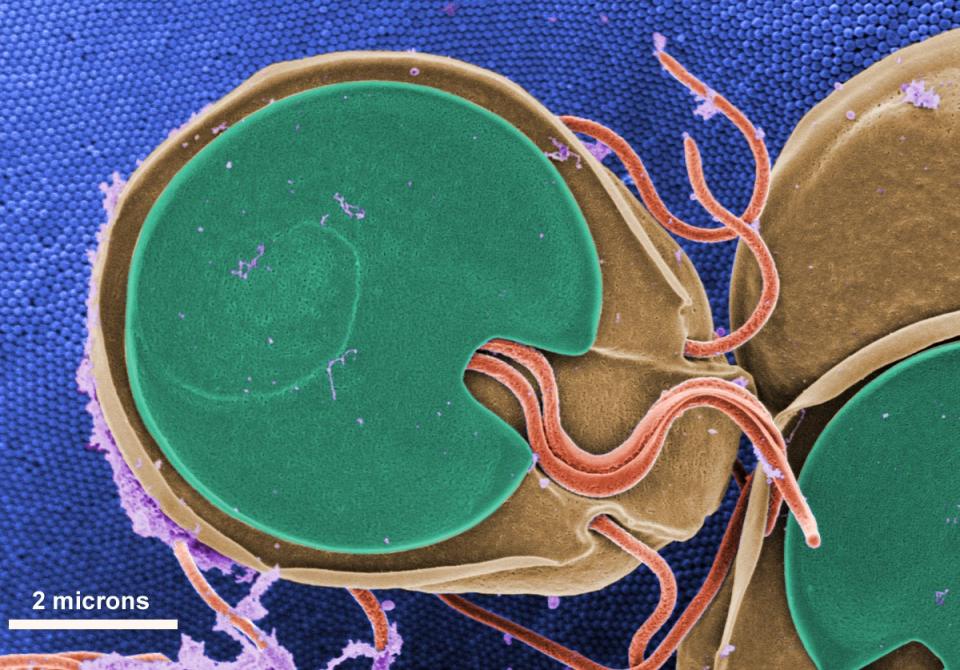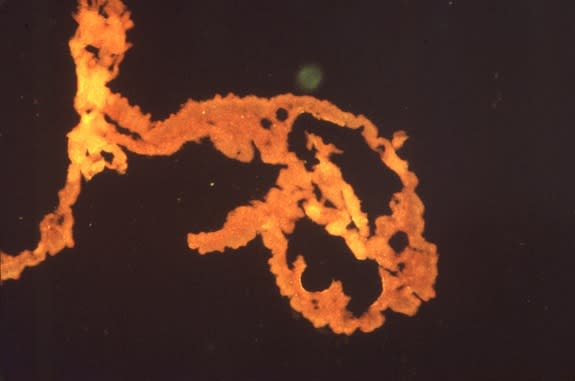Parasite Evolution: Here's How Some Animals Became Moochers
Nobody likes a mooch, but new research finds that grifting off others is a sound evolutionary strategy.
Parasitism — a survival strategy that involves hijacking a host's nutrients for one's own benefit — has emerged in the animal kingdom at least 223 times, according to a study published July 19 in the journal Biology Letters. And though parasitism is sometimes considered an evolutionary dead end because it requires putting all of one's eggs in the host's basket, parasitic species are equally as diverse as nonparasitic species, suggesting that parasites do just fine for themselves.
The estimate of 223 independent origins of parasitism is nearly four times higher than the previous estimate of around 60. That's because no one had looked at the question systematically, said study lead author Sara Weinstein, a graduate student in ecology, evolution and marine biology at the University of California, Santa Barbara. And many surveys of parasitism have focused on organisms that are relevant to humans, like the intestine-dwelling tapeworm, while overlooking arthropods like mites and flies.
"We spent a lot of time looking at these groups that aren't typically included in these estimates," Weinstein told Live Science. [See Photos of Human Parasites Under the Microscope]
More than expected, but rare
Tracing the origins of parasitism took six years of combing through research on parasitic animals and their closest relatives, Weinstein said. Some of the research she used dated back to as early as the 1800s. By comparing parasitic species to their closest nonparasitic relatives, Weinstein was able to tease out the points in time when a new, parasitic species split off from a free-living ancestor. She focused on the animal kingdom — it would have been an overwhelming task to include viruses, bacteria and fungi in the survey.
There are millions of parasitic species, Weinstein said. In fact, a 1998 paper published in the International Journal for Parasitology argued that most life on Earth is parasitic. Other estimates put the number at around 40 percent of animals. Pegging the number of independent examples of parasites that have evolved at 223 might seem high, Weinstein said, but considering the more than 7 million species of animals currently alive, 223 is a relatively small number.
"It's actually a fairly rare transition," she said.
Developing parasites
Most parasite groups evolved before the Mesozoic era, more than 250 million years ago. These old groups are also, generally, the largest, and as such contain the most species.
"The 10 largest parasite groups actually contain 90 percent of parasite species," Weinstein said.
Because these groups are so old, it's hard to find the free-living relatives that the parasitic species evolved from. Far more illuminating, Weinstein said, are the remaining 10 percent of parasites, particularly the understudied mites and flies, Weinstein said.
"They either transitioned to parasitism relatively recently or actually are in the process," she said. Some are "facultative parasites," which are organisms that can become parasitic when the environmental conditions are right, but can also live independently.
Many parasites have only one parasitic stage in their life cycle, or spend at least some portion of their life as free-living organisms. One example is the Schistosoma parasite, which hatches inside of freshwater snails. The larvae then swim through the water until they find an animal host (including humans). When they have a host, the free-swimming larvae revert back to a parasitic stage, squirming through the skin and developing to adulthood inside the blood vessels. They then lay eggs, which are released through urination or defecation to — hopefully, from the worms' perspective — find their way back to a snail host. The human host who is infected with the Schistosoma parasite develops the disease schistosomiasis, which is marked by bloody urine and diarrhea, fever, and bladder, liver and spleen damage.
Original article on Live Science.
Editor's Recommendations
Copyright 2016 LiveScience, a Purch company. All rights reserved. This material may not be published, broadcast, rewritten or redistributed.



